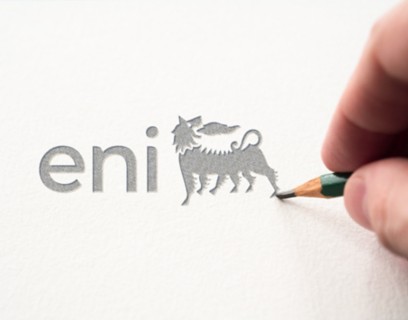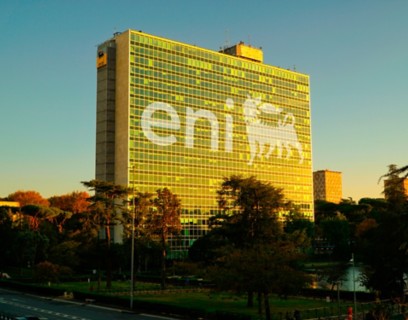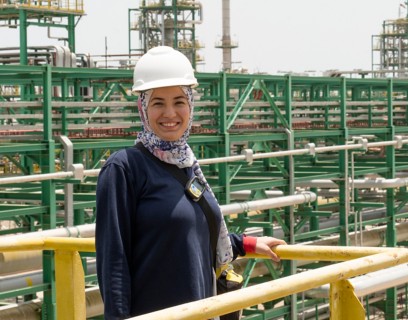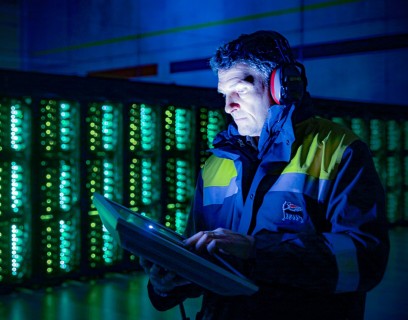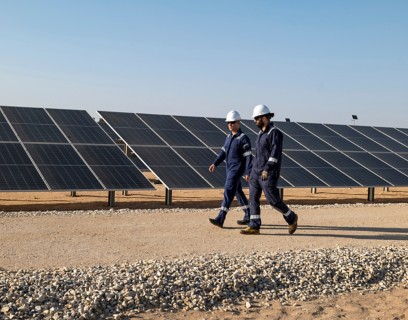Reducing emissions linked to Oil&Gas production, contributing to the Net Zero target

Our commitment to the progressive reduction of emissions from our operations includes cutting methane fugitive emissions and routine or process flaring and venting, and by investing in energy efficiency. We plan to achieve net zero emissions (Scope 1+2) for the upstream business by 2030 and for all Eni businesses by 2035. Remaining emissions will be voluntarily offset through high quality carbon credits.
The topics presented at COP29, the United Nations Climate Change Conference held in Baku, the capital of Azerbaijan, highlight the global commitment to reducing emissions and implementing the joint initiatives introduced during COP28, to which Eni has committed. We are continuing to implement the collaborative actions signed with OGDC (Oil & Gas Decarbonization Charter), GFMR (Global Flaring and Methane Reduction, an initiative led by the World Bank), and OGCI (Oil and Gas Climate Initiative).
Additionally, again for 2025, Eni has retained the OGMP (Oil & Gas Methane Partnership 2.0) Gold Standard Reporting for its commitment to reporting emissions with the highest data quality. In 2024, we published the first Eni Methane Report, presenting emissions data in line with the initiative’s requirements.
Francesca Ciardiello
Head of Sustainability at Eni

The first Eni Report dedicated to methane
In its first dedicated Methane Report, Eni acknowledges the importance of reducing methane emissions in the oil and gas sector to tackle climate change, while also recognising the role of natural gas in the energy transition. The report underscores our commitment to transparency and the reduction of global methane emissions, acknowledges the key role that decreasing methane emissions in the Oil & Gas sector can play in combating climate change and details Eni's actions to lower methane emissions across all its operations, as well as how we share this experience with other industry operators.
Eni’s actions to reduce methane emissions across its operations.
Targeting Net Zero emissions Scope 1+2
Actions to reduce methane and flaring emissions and investments in energy efficiency are part of our operations’ decarbonization strategy, which sets Net Zero emissions targets in the short and medium term. We expect to achieve Net Zero Scope 1+2 emissions for the upstream business by 2030 (Upstream Net Zero) and for all Eni businesses by 2035 (Eni Net Zero).
At COP29, the Oil & Gas Decarbonization Charter (OGDC) published its first progress report, “The Oil & Gas Decarbonization Charter, 2024: A Baseline for Action”. The Collaborate & Share programme is a cornerstone of the OGDC’s efforts to accelerate climate action.
This initiative complements Eni’s participation in the Global Decarbonization Accelerator, a platform launched by the COP28 Presidency to demonstrate the Oil & Gas industry's concrete contribution to the decarbonisation process.
Reducing Methane Emissions
Methane emissions along the Oil & Gas production chain are the focus of considerable attention in the international climate debate, in view of their significant impact on climate change and the technical and economic feasibility of reducing emissions in the short and medium term. The main sources of methane emissions are unintentional releases into the atmosphere (namely fugitive emissions) from the unburned fraction in flare gas and flue gas from combustion systems, and from venting.
Eni’s Commitment
We reaffirm our target to keep Upstream methane intensity below 0.2%, in line with the “well below 0.2%” target of the Oil and Gas Climate Initiative (OGCI) target of “well below 0.2%” by 2025, continuing to focus in particular on reducing fugitive emissions and implementing projects to cut methane emissions from venting and flaring. Eni has set a target to reduce fugitive methane emissions by 80% (compared to the 2014 baseline) by 2025. This target was already achieved in 2019, thanks to the rollout of LDAR (Leak Detection And Repair) campaigns carried out annually on assets operated by Eni. In 2024, Eni’s fugitive methane emissions from the Upstream sector were 96% lower than in 2014, and down by around 15% compared to 2023. LDAR campaigns cover all Eni-operated assets and are conducted annually, including through the use of optical technologies. The use of drones to provide site-level methane visualisation has marked a significant step forward in the 2024 campaign in Italy, in compliance with the new EU Methane Regulation that entered into force in August 2024. In 2022, we also helped launch the OGCI-led initiative Aiming for Zero Methane Emissions Initiative, which now has around 100 participating companies.
An Eye on Methane: International Methane Emissions Observatory 2023 Report
Reducing Routine Flaring
Routine gas flaring is the flaring of process gas associated with oil production that takes place during normal operations in the absence of sufficient facilities/infrastructures to allow the produced gas to be reinjected, utilized on-site or dispatched to a market. This flared gas is a significant source of CO2 and methane emissions; if recovered, it could be used to replace more carbon-intensive fuels, helping to improve access to energy and, consequently, global energy security.
Eni’s Commitment
We reaffirm our commitment to progressively reducing routine flaring and bringing forward the “Zero Routine Flaring” target promoted by the World Bank’s Global Gas Flaring Reduction Partnership (GGFR) from 2030 to 2025. Eni has already implemented numerous gas enhancement projects aimed at producing electricity for local communities, domestic use or export, and several others are currently under development. In recent years, Eni has stepped up its efforts to identify and implement flaring mitigation initiatives, launching projects in Congo, Libya and Egypt, where logistical, operational and market barriers have so far limited the enhancement of associated gas. In this context, Eni is making progress towards the target of zero routine flaring in operated assets by 2025. For co-operated assets, target achievement depends on the completion of ongoing projects in Libya, currently expected in 2026.
Investing in Energy Efficiency
Energy efficiency is a key element of Eni’s decarbonization strategy as it reduces energy consumption and, consequently, CO2 emissions. In the coming years, in addition to intensive analysis of consumption through energy audits, which now cover almost all operated assets, we plan to progressively extend ISO 50001 certification (to cover 86% of energy consumption at Eni sites by 2024) to the most energy-intensive companies and plants. Adoption of Best Available Technologies from the initial design phases, integration of renewable energy, digitalisation of processes and optimisation of our operations are the main pillars of this process, which aims to continuously improve the energy performance of our assets and reduce our carbon footprint.
Reducing Methane Emissions
Reducing Methane Emissions
Methane emissions along the Oil & Gas production chain are the focus of considerable attention in the international climate debate, in view of their significant impact on climate change and the technical and economic feasibility of reducing emissions in the short and medium term. The main sources of methane emissions are unintentional releases into the atmosphere (namely fugitive emissions) from the unburned fraction in flare gas and flue gas from combustion systems, and from venting.
Eni’s Commitment
We reaffirm our target to keep Upstream methane intensity below 0.2%, in line with the “well below 0.2%” target of the Oil and Gas Climate Initiative (OGCI) target of “well below 0.2%” by 2025, continuing to focus in particular on reducing fugitive emissions and implementing projects to cut methane emissions from venting and flaring. Eni has set a target to reduce fugitive methane emissions by 80% (compared to the 2014 baseline) by 2025. This target was already achieved in 2019, thanks to the rollout of LDAR (Leak Detection And Repair) campaigns carried out annually on assets operated by Eni. In 2024, Eni’s fugitive methane emissions from the Upstream sector were 96% lower than in 2014, and down by around 15% compared to 2023. LDAR campaigns cover all Eni-operated assets and are conducted annually, including through the use of optical technologies. The use of drones to provide site-level methane visualisation has marked a significant step forward in the 2024 campaign in Italy, in compliance with the new EU Methane Regulation that entered into force in August 2024. In 2022, we also helped launch the OGCI-led initiative Aiming for Zero Methane Emissions Initiative, which now has around 100 participating companies.
An Eye on Methane: International Methane Emissions Observatory 2023 Report
Reducing Routine Flaring
Reducing Routine Flaring
Routine gas flaring is the flaring of process gas associated with oil production that takes place during normal operations in the absence of sufficient facilities/infrastructures to allow the produced gas to be reinjected, utilized on-site or dispatched to a market. This flared gas is a significant source of CO2 and methane emissions; if recovered, it could be used to replace more carbon-intensive fuels, helping to improve access to energy and, consequently, global energy security.
Eni’s Commitment
We reaffirm our commitment to progressively reducing routine flaring and bringing forward the “Zero Routine Flaring” target promoted by the World Bank’s Global Gas Flaring Reduction Partnership (GGFR) from 2030 to 2025. Eni has already implemented numerous gas enhancement projects aimed at producing electricity for local communities, domestic use or export, and several others are currently under development. In recent years, Eni has stepped up its efforts to identify and implement flaring mitigation initiatives, launching projects in Congo, Libya and Egypt, where logistical, operational and market barriers have so far limited the enhancement of associated gas. In this context, Eni is making progress towards the target of zero routine flaring in operated assets by 2025. For co-operated assets, target achievement depends on the completion of ongoing projects in Libya, currently expected in 2026.
Investing in Energy Efficiency
Investing in Energy Efficiency
Energy efficiency is a key element of Eni’s decarbonization strategy as it reduces energy consumption and, consequently, CO2 emissions. In the coming years, in addition to intensive analysis of consumption through energy audits, which now cover almost all operated assets, we plan to progressively extend ISO 50001 certification (to cover 86% of energy consumption at Eni sites by 2024) to the most energy-intensive companies and plants. Adoption of Best Available Technologies from the initial design phases, integration of renewable energy, digitalisation of processes and optimisation of our operations are the main pillars of this process, which aims to continuously improve the energy performance of our assets and reduce our carbon footprint.
GSN: Eni’s technology to monitor methane emissions
Eni's Gas Sensor Node continuously monitors and measures fugitive methane emissions, enabling targeted interventions and regulatory compliance.
Actions for a joint commitment
We have launched tangible actions for collaboration and knowledge-sharing to reduce emissions, both through industry organisations and public–private partnerships such as the Oil and Gas Climate Initiative (OGCI) and the World Bank’s Global Flaring and Methane Reduction (GFMR), and via bilateral agreements with producing countries and their national oil companies. Eni, as a member of OGCI, is a sponsor of OGCI’s Satellite Monitoring Campaign program, which uses satellite technology to monitor 50 of the world’s most emission-intensive sites, facilitating the identification of solutions to reduce methane emissions. Moreover, over the 2023–2024 period in Algeria and Kazakhstan demonstrated the effectiveness of joint efforts and new technologies deployed with rapid results, such as the mitigation of three emission sources with an average of 3,200 kg/h of methane emissions. In 2024, OGCI expanded the campaign to include more countries and operators, doubling the number of assets and countries involved, with new areas added in Central Asia, North Africa and South America. Moreover, through the OGCI Climate Investment, Eni has contributed to the development of technologies that can identify and monitor methane emissions. OGCI recognises that technological innovation plays a central role in combating climate change, combined with the promotion of collaboration between companies in the energy sector, first and foremost national oil companies.
Eni has also joined the World Bank’s Global Flaring and Methane Reduction Fund to support the reduction of methane flaring and venting in high emitting and low- income countries.
To support national oil companies’ decarbonization initiatives, we have started collaborations with Sonatrach in Algeria and with the Egyptian Natural Gas Holding Company (EGAS) in Egypt on field activities and training programmes focused on flaring reduction and the measurement, mitigation and reporting of methane emissions. Similar initiatives are taking place in Libya, the United Arab Emirates and Indonesia.
Specifically, with our Algerian partner Sonatrach, we have concluded strategic agreements for the reduction of greenhouse gas and methane gas emissions, which include the launch of energy efficiency initiatives, the development of renewables, hydrogen production, and carbon capture and storage projects. In 2024, Eni and Sonatrach completed a joint Energy Assessment project at the ZCINA site, a facility operated by Sonatrach in Algeria. The project reflects their shared commitment to identifying potential CO₂ reduction initiatives and implementing the best available technologies to achieve this goal.
Our commitment to carbon neutrality
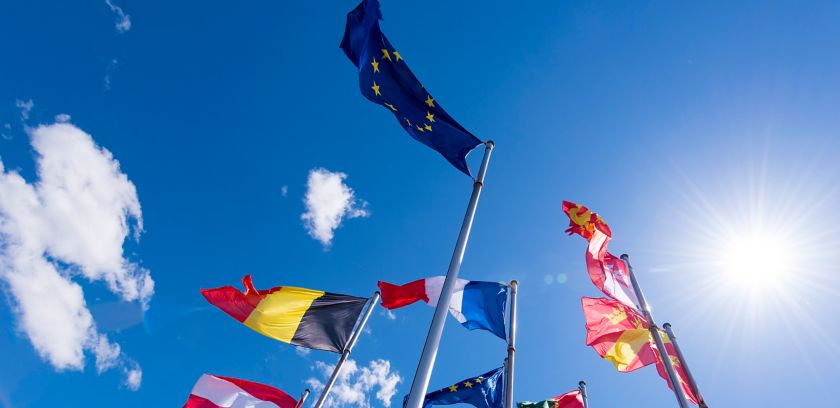
Partnerships and advocacy initiatives for carbon neutrality
We engage with institutions, energy players, suppliers, civil society, governments and legislators to combat climate change.

Our initiatives for Carbon Offset Solutions
Carbon Offset Solutions include initiatives to protect regions and ecosystems and technological solutions to offset greenhouse gas emissions.
The Net Zero Target
To achieve carbon neutrality by 2050, we leverage partnerships and cutting-edge solutions.
Eni for 2024. Check out our interactive feature
Read the stories, case studies and testimonials behind our contribution to a socially equitable energy transition in the Sustainability Report.


